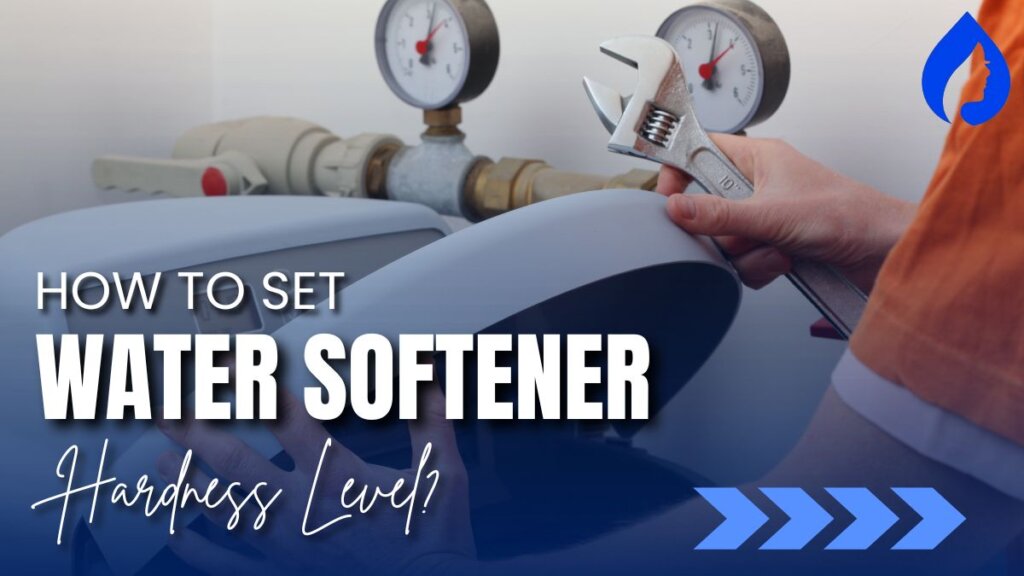
Buying a softener isn’t enough!
You must program correct water hardness levels to avoid inadequate softening and water wastage. But how to set the water softener hardness level accurately?
As a thumb rule, aim for a 7 to 10 GPG (Grains Per Gallon) water hardness level to ensure the best performance of the softener.
Continue reading as we unfold the exact factors and formula you need to know to set the correct hardness level like a champ!
🤔How to Determine Water Hardness Setting For Water Softeners?
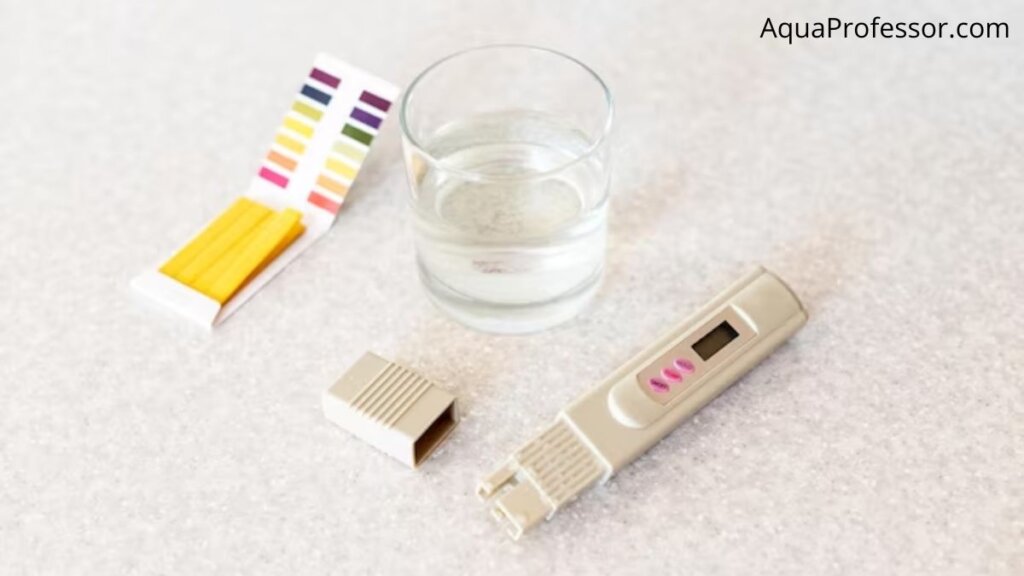
The following factors influence the hardness of water:
💦Water Hardness
The greater the water hardness levels, the higher the setting should be on your water softener to produce softened water.
Here is a table to compare your water hardness levels and take a step in the right direction:
| Classification | Hardness in GPG (Grains Per Gallon) | Hardness in PPM (Parts Per Million) | Hardness in mg/L |
| Soft | 0-3.5 | 0-60 | 0-75 |
| Moderately Hard | 3.5-7.0 | 61-120 | 76-150 |
| Hard | 7.0-10.0 | 121-180 | 151-300 |
| Very Hard | > 10.0 | > 180 | > 300 |
To know your exact water hardness levels – Get your water tested!
Check online Water Quality Reports or Consumer Confidence Reports of your community water to learn the hardness levels of your incoming water.
If you cannot find your city water data, test the water with a DIY water testing kit or water test strip at home.
For well water, you can also go for Tapscore hard water test, wherein your water sample is collected and tested in specialized laboratories for an accurate water analysis report.
🎯Iron and Manganese Concentration
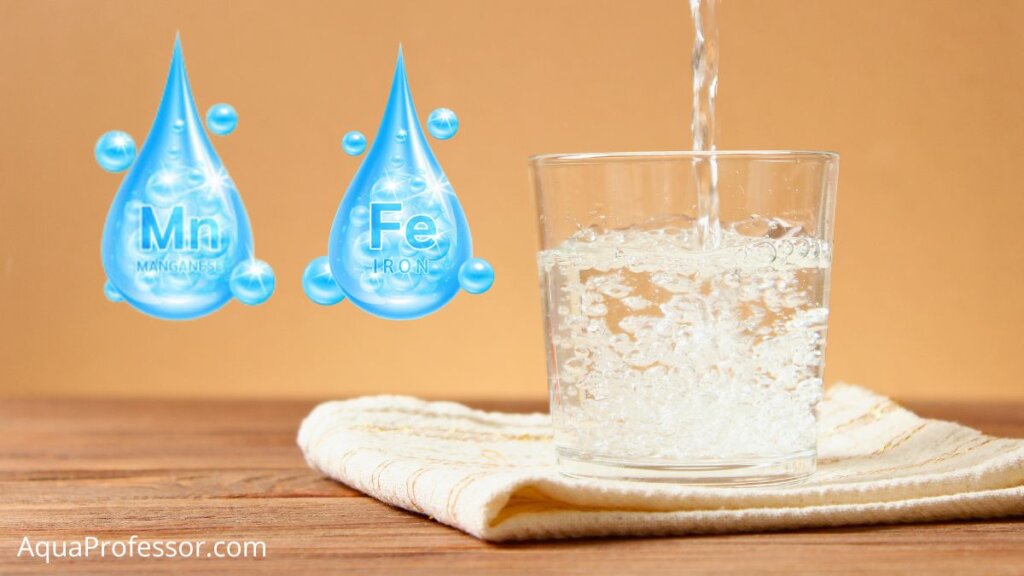
Iron and manganese are troublesome water elements. Good for us, water softeners can remove even 1 ppm of Iron & Manganese if programmed correctly.
The thumb rule is multiplying present iron levels by 4 and manganese levels by 6 in the softener setting. Remember that excess Iron levels (>1ppm) might require an additional iron filter.
Get your tap water tested for dissolved iron and manganese through the Yellow Tap Water Test offered by Tapscore to know the exact concentration of hardness minerals.
🧓Water Softener Age
It is advised to add upto 2 GPG buffer levels according to your softener age and water usage.
This is because the water-softener resin beads accumulate hard water minerals over time through ion exchange process, even after the regeneration or backwashing.
Some of these hard water minerals might escape into the treated water. Hence, you may not get the soft water you need for tension-free bathing and cooking.
So, the increase in actual water hardness for older water softener units (> 5 years) is given in the table below. Remember to keep your settings higher accordingly.
| Age of Water Softener | Increase in Hardness |
| 0–5 years | No adjustment |
| 5–10 years | 1 GPG |
| >10 years | 2 GPG |
Also Read: Best Water Softener Salt Type
🧮Here’s Your Best Setting For Water Hardness!
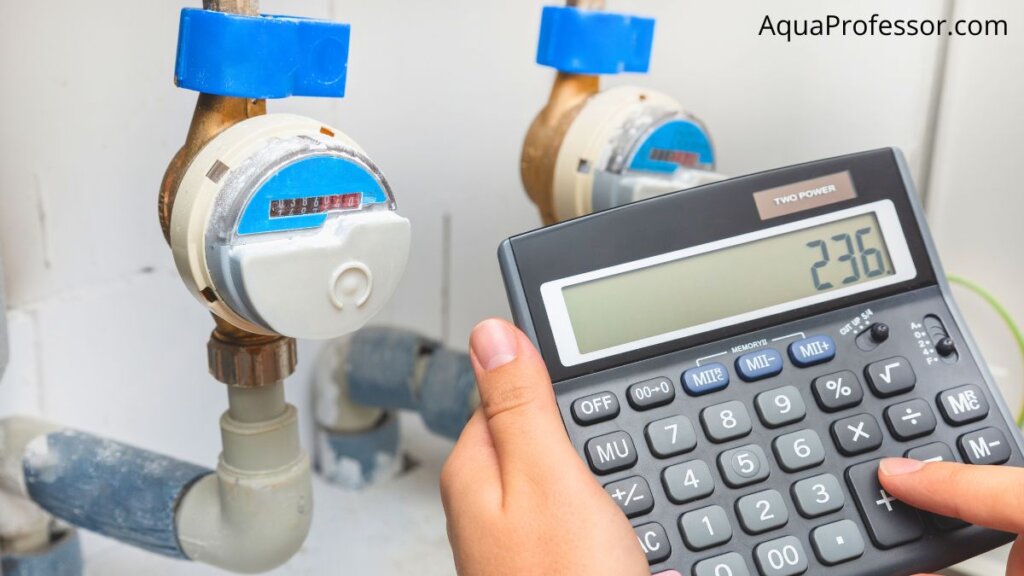
Here’s a formula used to set an ideal water hardness on a standard water softener:
Hardness setting = Hardness in GPG + (4 x iron in ppm) + (6 x manganese in ppm) + 2 GPG Buffer (considering softener age and unusual usage)
Let’s understand this with the help of an example:
Assume the following values for your home:
Water hardness – 6.5
Iron levels – 2 ppm
Manganese levels – 3 ppm
Water softener age – 6 years
Then, your water softener hardness number setting must be
6.5 + (4 x 2) + (6 x 3) + 2 = 6.5 + 8 + 12 + 2 = 28.5
Note:
Always keep a 2 GPG buffer irrespective of young softener age to compensate for the demand for water usage.
Water Softener Hardness Setting Calculator
Depending on the hardness setting, modern softeners calculate the following:
So, an inappropriate water softener’s hardness setting can hurt your pocket, lead to reduced efficiency of the softener, and disrupt your daily life.
The higher the water hardness setting, the more frequent the regeneration cycles will be to clean up the resin bed.
A high hardness setting will also mean more salt consumption, leading to additional sodium levels in the drinking water. Lastly, more water wastage will lead to higher water bills.
If your water hardness setting is lower than needed, it will lead to inadequate softening and decreased efficiency.
You will notice common water hardness issues like mineral buildup, scaling, clogging, staining, soap scum, dry skin, and deposits of fixtures in your home, increasing expenses on repairing and cleaning solutions.
Also Read: Why Water Softener Is Constantly Draining
⚙️Water Hardness Input Settings for Modern Water Softeners
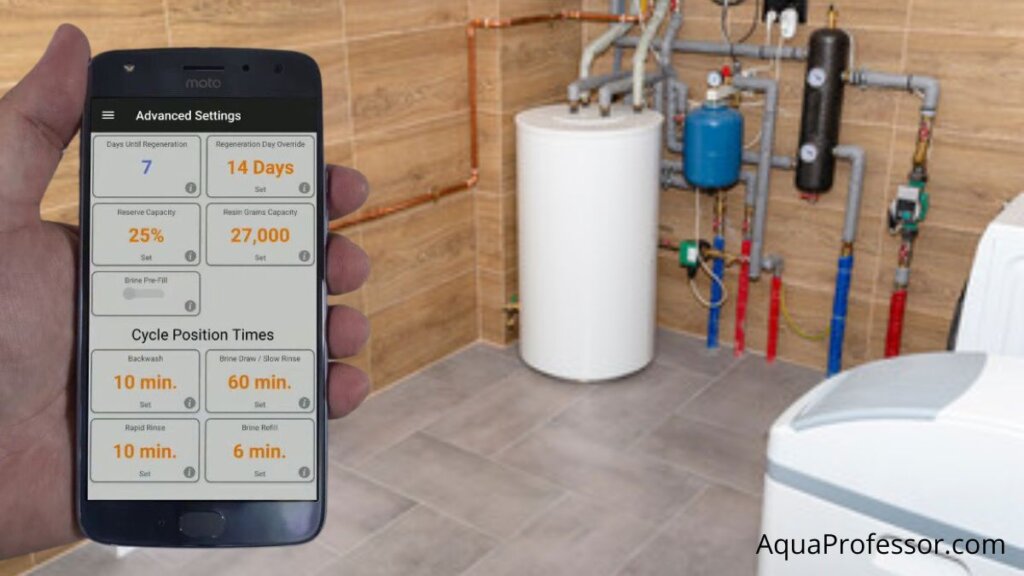
Also Read: Water Softener Grain Chart & Calculator
For electric water softeners with a manual digital head:
Also Read: Water Softener Drain Options
💡Water Softener Hardness Level FAQs
What happens if the water softener is set too high?
When the water softener setting is too high compared to water hardness levels, it tends to run regeneration cycles frequently or increases regeneration cycle length more than needed.
Moreover, excess brine solution will be utilized, exhausting salt faster. So, you will waste a lot of water and salt, leading to high electricity bills and salt refill costs.
How do I know if my water softener is set correctly?
You can know if your water softener is set correctly by checking whether the outcoming water is still hard with the soap test.
Fill an empty bottle 1/3rd full with your treated water. Add pure liquid soap and shake vigorously. If you see lather and fluffy bubbles, the water is soft, and the water softener is doing its job correctly.
If there are little or no fluffy bubbles and the water appears milky, it still contains hardness, and you must change your water softener settings.
Can water hardness fluctuate?
Yes. Water content varies depending on the season, climate, rainfall, pollution levels, and your water supplier.
Based on these factors, your city or well-water hardness fluctuates throughout the year. Thus, you can change your softener hardness setting from time to time accordingly.
How much salt should a water softener use per month?
It depends on the water softener model, hardness level, brand of salt, type of salt, and your water situation.
Different companies make water softeners with different sizes and capacities. Generally, for an average family, basic water softeners utilize 1-2 40-pound salt bags every 1–2 months.
Remember to refill the container regularly, not above the maximum capacity for adequate softened water.
What is the best way to test home water hardness?
If by best you mean the most accurate, go for laboratory testing.
Contact a reliable water testing company like Tapscore to collect your water sample and deliver detailed reports of dissolved minerals and other contaminants.
Some people might find this method expensive and time-consuming, which brings us to the second-best option – DIY Water Hardness Test kit.
Purchase reliable kits from the market or order online. Read the instruction manual and follow the steps precisely for accurate analysis.
Adarsh is a Health & Nutrition Sciences graduate with expertise in environmental health. He is associated with ventures like Glacier Fresh Filter and Simpure Filter Systems. Through Aqua Professor, he intends to provide helpful information to every home to help them make smarter decisions.
